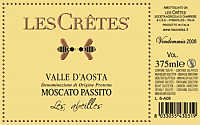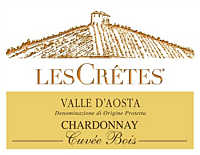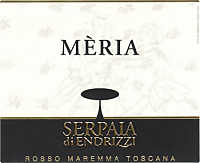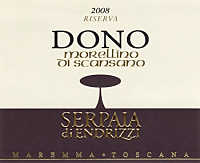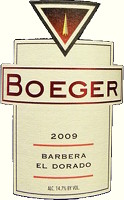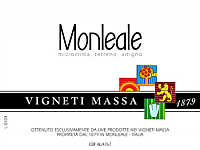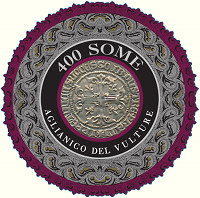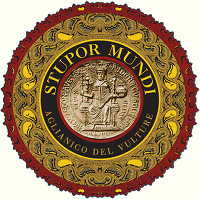|
Mature rose wines could be considered a subject of which it would make no sense
to talk about. There is in fact a small number of wine lovers who like rose
wines, a style produced in a truly marginal quantity if compared to worldwide
production, and the few who like them, usually prefer to uncork them within two
years from harvesting. Like already said, the production of rose wines is pretty
marginal if compared to the other wine styles. The number of producers who make
them is pretty small and they usually make few bottles. There are exceptions
represented by the wine areas in which these wines are traditionally produced,
such as Bardolino, Garda, Trentino, Abruzzo and Salento in Italy o Provence in
France. However, rose wine is a style generally consumed in its young age,
usually within the year following harvesting.
If all consumers prefer to drink rose wines in their youth, does it make any
sense to talk about mature rose wines? Indeed, among all wine styles, these are
the least suited to stand to a long period of time of aging in cask. There
however are exceptions to this and all depends on how the wine was made, from
grapes to vinification techniques. In this regard, rose wines are not so
different from any other style of wine. Just like most of white wines, roses are
produced in order to be consumed in their youth, therefore to allow the
appreciation of their fresh and immediate characters, however, just like some
whites, there are some exceptions. These exceptions, although they are even more
uncommon than in whites, can however give pleasing sensations as time goes by.
In these cases, crisp and immediate sensations are however replaced by complex
organoleptic qualities, not always being appreciated.
The specific techniques used for the production of rose wines strongly affect
their possibilities of aging with time. There are techniques suited for the
production of rose wines destined to an immediate consumption - that is, most of
them - whereas others allow to these wines to be kept and to develop for some
years in bottle. Also the variety of grapes used for production is directly
responsible of the aging possibilities in roses and, however, they are red
berried grapes properly vinified. It should also be said not all the techniques
used for the production of rose wines have the goal of producing this specific
style of wine. Some rose wines, in fact, are the result of a byproduct of the
production of red wines, a technique - we will talk about this later - allowing
the enrichment of body, structure and concentration in red wines, by using part
of the must for the production of rose wines.
|
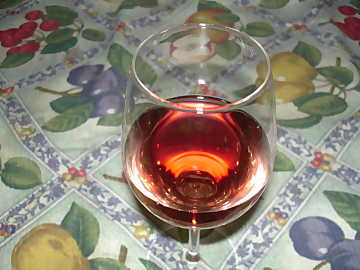 | |
| The color in mature
rose wines, with time, turn into a pale orange hue | |
|
Rose wines are usually produced by making use of four techniques, three of them
being very similar one to each other, the fourth one - like already said - is to
be considered as a byproduct of some red wine production. The principle with
which it is based the production of rose wines is however the same in all the
cases: to make a wine from red berried grapes with a variable pink color by
means of a short maceration of the must with the skins. This result can be
obtained by changing one of the main factors determining the color of rose
wines: time. As it is commonly known, grape juice of most of varieties,
including red ones, is white, with a characteristic green-gray
color. Grape juice - the must - gets a red color thanks to the contact with the
skin of red varieties, the part of the berry in which are found coloring
substances. Therefore, after having crushed grapes, if we immediately separate
skins from the must, we get a white must and with no color, therefore suited for
the production of white wines.
The time factor is therefore fundamental for the production of rose wines and
their color. The longer the must is being macerated with the skins, the more the
color will become red. If for a red wine the maceration can also last many days,
in some cases for more than one month, for rose wines this time is always
measured in hours. Six, twelve, twenty-four hours: it is very rare to go beyond
and for a longer time. In other words, a quantity of time in order to allow the
must to get a pink color. The duration of maceration in rose wines depends on
many factors, including the coloring capacity of the grape - grapes with a high
quantity of coloring substances need few hours - and the type of wine to be
produced. To summarize things up, everything starts from the crushing of red
grapes, the must is allowed to macerate with the skins for some hours, therefore
the must is separated from the skins and the process ends with the classic
vinification in in white.
During the maceration it can also start fermentation, a condition helping - as
it is commonly known - the extraction of the color from the skins. According to
the duration of maceration, rose wines are defined in vin gris (gray
wines), roses produced with a maceration of few hours; wines of one
night, roses produced with a variable maceration from 8 to 12 hours;
wines of one day, roses produced with a maceration from 12 and 24 hours.
Rose wines are hardly macerated with the skins for times longer than 24 hours,
however it should be noticed that for some rose wine - produced in order to get
particular results - the duration can also be of 48 hours. The maceration with
the skins does not only give color. As it is usually known, the skin of grapes
also contains aromatic and polyphenolic substances, both passed to the must
during the maceration. These two groups of substances will respectively
contribute to the enrichment of the olfactory profile of the wine and to its
structure.
Besides the techniques expressly used for the production of rose wines, there is
also another one which can be considered as a byproduct of the vinification of
red wines. This particular technique is usually called with the French name
saignée, usually translated as “bleeding”. The principle of
bleeding is to give more body to a red wine by concentrating the must, by
diminishing the ratio between the quantity of skins - that is, polyphenols and
color - and the must. The procedure consists in drawing a quantity of must off
from the fermentation tank after few hours, or few days, and as the must has
undergone a short maceration with the skins, its color has turned into pink.
This part of must is then fermented and vinified in white, therefore obtaining,
at the end of the procedure, a rose wine. As a matter of fact, both bleeding and
the other techniques, are all based on the same principle, that is obtaining a
must, shortly macerated with the skins, in order to extract a small quantity of
coloring substances according to the pink color the producer wishes to get.
The duration of maceration is not only decided according to the color the
producer wishes to obtain. During the maceration, from the skins is not only
extracted color, but also other polyphenolic substances - commonly called
tannins - and which will contribute to the structure of wine. Just like
any other style of wine, also rose wines are produced according to a specific
style, last but not the least, the type of market, therefore consumption, to
which they are destined to. In general terms, rose wines are produced with the
specific goal of being consumed within few months or a little more than one year
from their production: they are hardly produced with the goal of allowing them a
good aging in bottle. This choice is also determined by the way consumers
consider rose wines: wines expressing a fresh and immediate quality, in which
must be perceived aromas of flowers and fruits. If young rose wines are among
the least sold and appreciated ones, mature roses wines are even less.
What allows rose wines to properly evolve in bottle, while developing, with
time, complex organoleptic qualities and, at the same time, appreciable
characteristics without compromising agreeability? Factors allowing a proper
aging of every wine are always the same and rose wines are no exception.
Acidity, alcohol, presence of polyphenolic substances and - according to the
style - sugar, are the substances which can ensure rose wines a proper evolution
in bottle. Like already said, rose wines are produced with red berried grapes -
while noticing, at least in Italy, it is not permitted the production of roses
by adding white grapes, with the exception of sparkling wines - varieties of
grapes not particularly rich is acid substances. With the exception of few
cases, such as Nebbiolo, Pinot Noir and Aglianico, acidity in red berried grapes
is lower than white varieties. As a consequence of this, acidity in rose wines
will not significantly contribute to their keeping.
This does not mean rose wines do not have the crispness expressed by acidity;
indeed, this organoleptic sensation is a specific characteristic of this wine
style. It is not by chance rose wines are considered an “in between” -
although representing a category on their own - with whites and reds. In fact,
of white wines they have freshness and acidity, of reds they have aromas and, in
some cases, a structure which can be compared to certain young and light red
wines. A sure fact about rose wines is they do not have the same freshness of
whites, referred to acidity. To the keeping of rose wines - in part influenced
by acidity - significantly contributes alcohol, and this widely depends by the
type of grape and its ripeness, as well as polyphenolic substances extracted
during the short maceration. Also the quantity of polyphenolic substances passed
to the must during the maceration widely depends on the type of grape.
Rose wines suited for the aging in bottle greatly benefit of the presence of
polyphenols. When tannins are present in modest quantity, a
characteristic common to most of rose wines destined to an immediate
consumption, the wine is usually helped with the aging - and sometimes, the
fermentation - in cask. This particular wine making procedure enriches, as a
matter of fact, the wine of polyphenolic substances that, besides making the
wine more robust, allow the rose wine to better walk the long march of time when
it will be bottled. Rose wines aged in wood, a category made by a very small
number of examples, are the ones to be suited for the aging in bottle. Even
better, rose wines with an alcohol by volume greater than the average value for
this style, usually 12-13%, is a quality substantially helping the
possibilities of evolution with time.
Rose wines not suited to the aging in bottle are therefore the ones expressly
produced for an immediate consumption, produced in order to emphasize qualities
of crispness and freshness, just like white wines destined to the same type of
market. With times, and as it can be easily said, rose wines lose their
characteristic of freshness as well as their fruit aromas, while acquiring, with
time, a rounder personality, with aromas and tastes resembling jams and,
sometimes, dried fruits, such as hazelnut. Also color will turn into a pale
orange hue, something also happening in very mature red wines. The typical
acidity in rose wines is strongly attenuated, something which can also be
perceived in white wines. The tasting of mature rose wines can sometimes be
confusing, because of the development giving, like to say, an unusual
organoleptic quality. A rose wine having the right characteristics suited for
the aging in bottle is however a wine which does not pass unnoticed, a wine
having a strong personality, so distant from the sensations offered by a white
or a red. And this is not a fault, indeed, it is just another possibility for
better appreciating rose wines.
|


